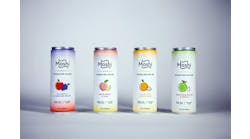Health and how it's impacted by food has been the single most important focus of media reports about nutrition and food safety since 1995, according to a decade-long biennial tracking survey of print, broadcast and Internet topics by the Washington, D.C.-based International Food Information Council (IFIC) Foundation and the Center for Media and Public Affairs.
From 1995 to 2005, one thing was consistent: Food was big news. From recent obesity epidemic reports to past emphasis on foodborne illness and food labeling regulations, Americans admit they get more food and health information from the mass media than from their doctors, so it's useful to zero in on media focus.
Food for Thought research, replicated at two-year intervals, finds journalists are very good at telling the "what" of a food and health story, but omit "to whom" the advice applies, "how much" is needed, "how often" the advice should be followed and "the consequences" of following the advice. Journalists often oversimplify the reporting of science-based health and food news, so consumers cannot judge the relevance of the information for their own diet, lifestyle and nutritional needs.
One of the problems is journalists cite research published in obscure scientific journals, studies once read only by the medical community. This conflicting health news creates confusion among consumers.
It's important to follow the media's topic focus. Obsession with obesity reared its head in 2003, changing the story selection rules for the research study. In previous years, the analysis was restricted to stories focusing on nutrition, dietary choices and food safety. Currently, coverage is taking a more holistic approach to obesity and physical activity, blurring the lines between nutrition stories and articles on other aspects of obesity. Selection rules were amended to include reports on obesity and physical activity as part of a healthy lifestyle.
Obesity was the No. 1 story in the 40 local and national media outlets sampled in 2005. Debate centered on childhood obesity, conflicting data from to the Centers for Disease Control and Prevention mortality reports and the increase in research studies on the problems of excess weight. It's notable the citation of scientific research to support an assertion of harm or benefit was often as simple as "studies show," "research suggests" or "according to research."
"Functional Foods = Nutritional Benefits" led the discussion of not only the benefits attributed to certain foods, but overall food attributes such as flavor. Heart-healthy fats, fiber and vitamins and minerals were covered extensively.
One of the topics conspicuously absent in 2005 was food safety. Previous surveys referenced foodborne illness and food contaminants as prime issues. Fortunately, there were no major outbreaks of foodborne illness in 2005 and, although two cows tested positive for BSE or mad-cow disease during the survey period, very few articles were published on the subject.
Stories about prevention of heart disease and cancer proliferated. Focus on the benefits of certain foods outweighing harm (by a two-to-one margin) last year is notable. Coverage of the attributes of food has taken on a more advisory or helpful tone, offering consumers information on what to eat or how to maintain a healthful weight, rather than trying to scare them.
Leading Media Topics of Discussion (2003 vs. 2005)
| 2003 | 2005 | |||
| Topics | No. of stories | % | No. of stories | % |
| Obesity | 145 | 7 | 275 | 11 |
| Disease Prevention / Reduction | 179 | 9 | 236 | 10 |
| Physical Activity | 115 | 6 | 239 | 10 |
| Weight Management | 77 | 4 | 208 | 9 |
| Disease Causation | 121 | 6 | 165 | 7 |
| Vitamin / Mineral Intake | -- | -- | 104 | 4 |
| Fat Intake | 154 | 8 | 100 | 4 |
| Functional Foods | 82 | 4 | 98 | 4 |
| BSE | 144 | 7 | 70 | 3 |
| Caloric Intake | 77 | 4 | 53 | 2 |
| Biotechnology | 147 | 8 | 34 | 1 |
| All Others | 607 | 32 | 827 | 35 |
| Totals | 1,946 | 2,412 |
Source: Food for Thought survey, International Food Information Council

